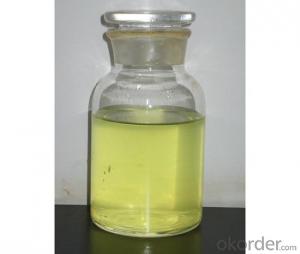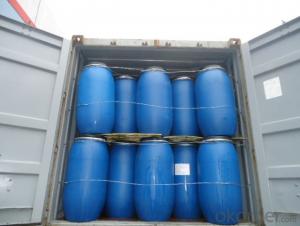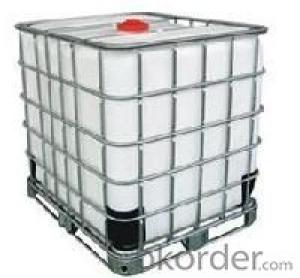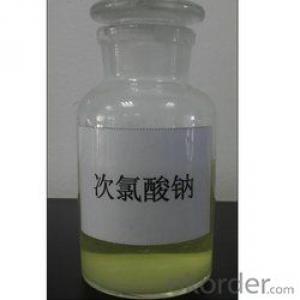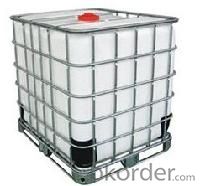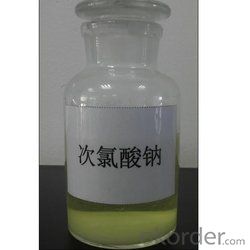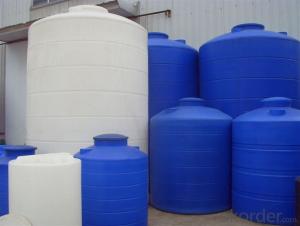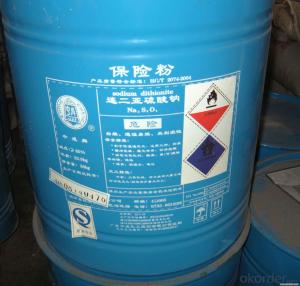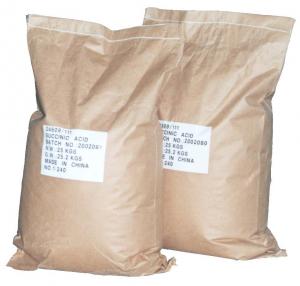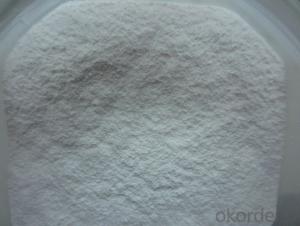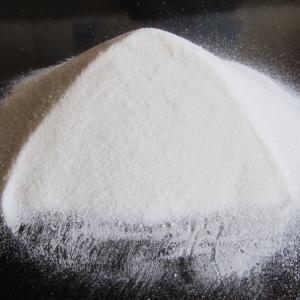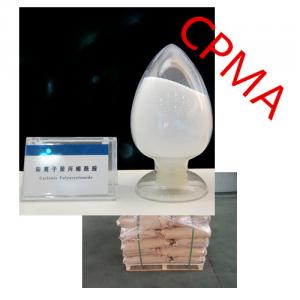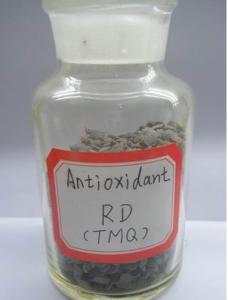Sodium Hypochlorite SOLUTION EXTRA PURE China Supplier
- Loading Port:
- Tianjin
- Payment Terms:
- TT OR LC
- Min Order Qty:
- 25 m.t.
- Supply Capability:
- 6000 m.t./month
OKorder Service Pledge
OKorder Financial Service
You Might Also Like
Sodium Hypochlorite
CAS NO: 7681-52-9
Chemical Formula: NaClO
Molecular Weight: 74.44
Appearance: Yellow transparent Liquid
Standard: HG/T2498-1993
Specification:
Available Chlorine: 8%-16%
NaOH: 1% Max
Transportation Info:
Class: 8 UN NO: 1791 PG:III
Application:
Disinfection for swimming pool, drinking water, cooling tower and sewage and waste water, food, and farming, hospital, school, station and household etc
Good bleaching and oxidation in paper and dye industry.
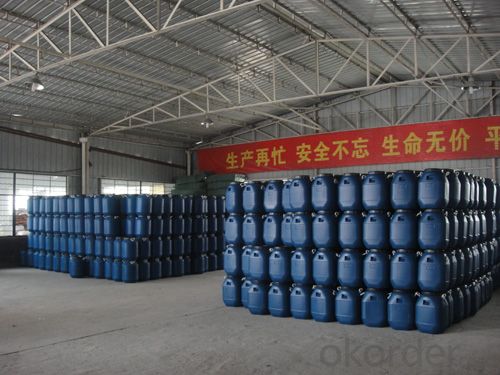
Normal Packing: 30kg drum, 1200kg IBC Tank
Applications:
1. For bleaching purpose of wood pulp, silk, cloth and fibre.
2. be widely used as disinfectant, bleaching agent or oxidizer. It is a wonderful disinfection for swimming pool, drink water
3. Sodium Hypochlorite can be widely used as disinfectant, bleaching agent or oxidizer.
4. Hotel school hospital Disinfection
Storage: Isolate from incompatible substances. Containers of this material may be hazardous when empty since they retain product residues (vapors, liquid); observe all warnings and precautions listed for the product.
- Q: Hydrogen and oxygen in the role of the catalyst can do the chemical formula of aviation fuel?
- You two yeah? Meaning that hydrogen is ignited in oxygen to release energy to push the rocket forward, as the catalyst for those who love,
- Q: Exemplify the use of green catalysts in green chemistry
- The role of the catalyst is to control (speed up or slow down) the rate of chemical reactions. If you have to add a "green", perhaps this catalyst also requires not to pollute the environment or harmful to humans. Such as fertilizer used in the manufacture of platinum catalysis should belong to this.
- Q: how could scientists know the exact catalyst for every reactions??? THANX sooo much
- Believe me, nema, there's no way that we chemists know the best catalyst for every reaction. That would be simply impossible. However, from the type of reaction, the reactants, products, reaction conditions, solvents, etc. and from one's experience and the literature (papers and patents) one can get a good idea for most reactions of the type of catalyst that has worked for similar systems. One then starts off with a catalyst from the literature and modifies or changes it if improvement is needed based on chemical principles that one learns. There are also some theoretical calculations that can be made. Sometimes they work and sometimes they don't :) If it is an industrially important process like the Haber process for making ammonia from nitrogen gas and hydrogen gas, there may be thousands of catalysts which have been tried and evaluated. New minor improvements are being made every day. When a company does find a very good catalyst for an important reaction, often they keep it a trade secret. The good catalyst can make a huge difference in how commercially successful a particular process is. That's a large part of what chemical engineers do. You may never know if you have the best catalyst. The most you can hope for is one that is good enough. So it's a few parts personal knowledge, a few parts literature, a couple of parts theory, a lot of experimentation and often, more than not, a little luck. :)
- Q: 1. Catalysts can help to bring the reactants together in the correct orientation2. The chemical formula of a catalyst is written on the left hand side (reactant) side of an equation.3. Catalysts can provide a surface on which the reaction occurs.4. Catalysts increase the activation energy.5. Catalysts increase the magnitude of the equilibrium constant, thus favoring product formation.6. "Enzymes" are biochemical catalysts.7. Catalysts increase the rate of a reaction.8. Catalysts are slowly used up during the reaction and need to be replaced.
- 7 is definetly true
- Q: What happens to a catalyst after a chemical reaction?
- If it is only a catalyst, then by definition it will still be there at the end.
- Q: Who knows hydrogen and nitrogen in the high temperature, high pressure and catalyst conditions for the synthesis of ammonia chemical equation ah? Urgent! The SOS
- 3H2 + N2 ===== 2NH3 conditional catalyst
- Q: The size of △ H in the thermochemical reaction equation is related to the use and unused catalyst
- It does not matter
- Q: What is the difference between an enzyme catalyst in a living body and a catalyst in chemistry?
- (Such as: high temperature, high pressure, strong acid, alkali, etc.), but the enzyme catalyzed reaction (enzymatic reaction) is generally at room temperature, atmospheric pressure (normal reaction), the reaction temperature of the chemical reaction, , Neutral pH, etc. under mild reaction conditions.
- Q: The beginning of the chemistry plus the catalyst and the plot without the Cuihua agent
- Plus the rate of fast
- Q: Several experiments were carried out using catalysts
- Hydrogen peroxide in the manganese dioxide as a catalyst for decomposition reaction: 2H2O2 == MnO2 == 2H2O + O2 ↑ (laboratory oxygen principle)
Send your message to us
Sodium Hypochlorite SOLUTION EXTRA PURE China Supplier
- Loading Port:
- Tianjin
- Payment Terms:
- TT OR LC
- Min Order Qty:
- 25 m.t.
- Supply Capability:
- 6000 m.t./month
OKorder Service Pledge
OKorder Financial Service
Similar products
Hot products
Hot Searches
Related keywords
